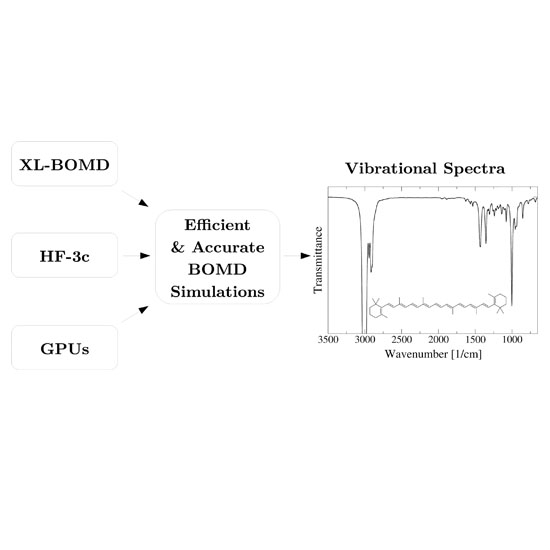Efficient and Accurate Born–Oppenheimer Molecular Dynamics for Large Molecular Systems
25-Oct-2017
J. Chem. Theory Comput., 2017, 13 (11), pp 5479–5485, DOI: 10.1021/acs.jctc.7b00937
J. Chem. Theory Comput., online article
An efficient scheme for the calculation of Born–Oppenheimer molecular dynamics (BOMD) simulations is introduced. It combines the corrected small basis set Hartree–Fock (HF-3c) method by Sure and Grimme [J. Comput. Chem. 2013, 43, 1672], extended Lagrangian BOMD (XL-BOMD) by Niklasson et al. [J. Chem. Phys. 2009, 130, 214109], and the calculation of the two electron integrals on graphics processing units (GPUs) [J. Chem. Phys. 2013, 138, 134114; J. Chem. Theory Comput. 2015, 11, 918]. To explore the parallel performance of our strong scaling implementation of the method, we present timings and extract, as its validation and first illustrative application, high-quality vibrational spectra from simulated trajectories of β-carotene, paclitaxel, and liquid water (up to 500 atoms). We conclude that the presented BOMD scheme may be used as a cost-efficient and reliable tool for computing vibrational spectra and thermodynamics of large molecular systems including explicit solvent molecules containing 500 atoms and more. Simulating 50 ps of maitotoxin (nearly 500 atoms) employing time steps of 0.5 fs requires ∼3 weeks on 12 CPUs (Intel Xeon E5 2620 v3) with 24 GPUs (AMD FirePro 3D W8100).











